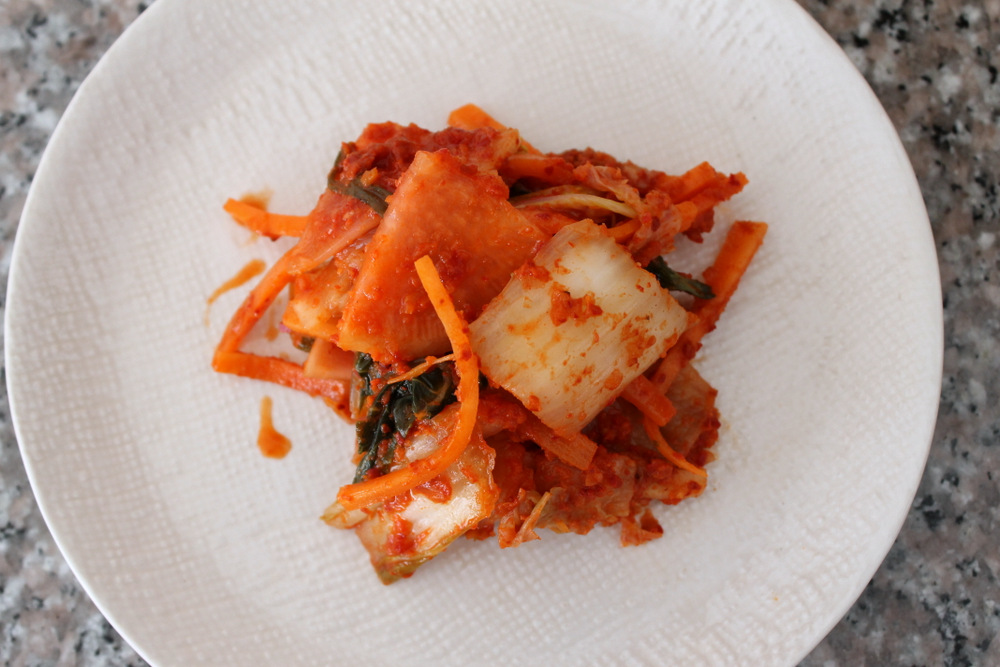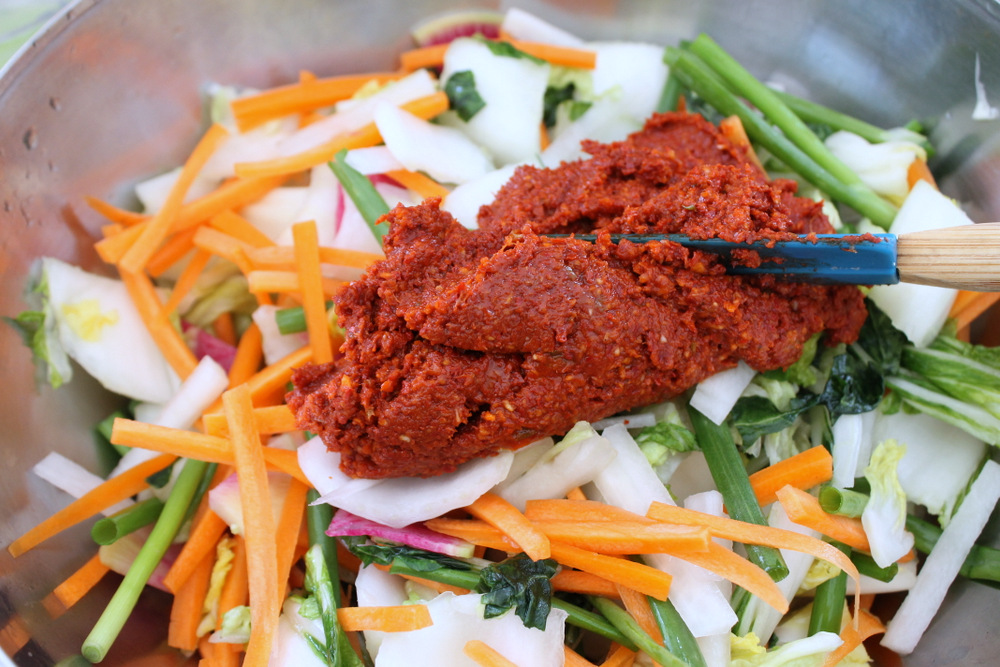
It is easy to be intimidated by kimchi. Sit down at most any Korean restaurant and you will likely be greeted by an array of spicy pickled vegetables, some so unfamiliar in taste that you can’t imagine attempting to make them yourself.
Forget that negative thought. Kimchi is actually quite easy to make at home, and even easier to personalize once you’ve learned the basics. I like to make kimchi-style pickles out of just about anything. Napa cabbage and daikon radish are the most familiar, but kimchi can be made from anything from cucumbers to Brussels sprouts. Lest you think these variations skew too far from tradition, remember that kimchi is simply a Korean method of fermentation. There is an entire museum in Seoul dedicated to the myriad kimchis that exist and existed over the coarse of Korea’s history.
Winter is the perfect time to ferment a batch or two of kimchi. Cabbage and root vegetables are abundant, and the cooler (emphasis on the “er”) temperatures mean that fermentation won’t progress too quickly.
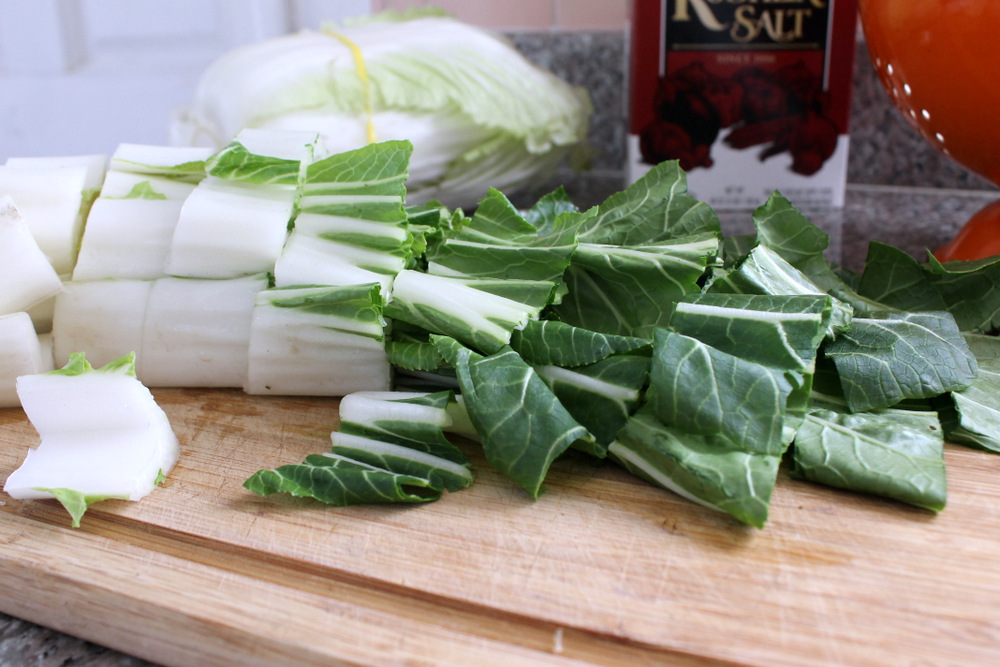
I like to start with a 50/50 blend of bok choy (the mature heads, not the tender baby bulbs) and Napa cabbage. One head of bok choy equals about a half a head of Napa. If the extra cabbage bothers you, simply double the recipe. I chop the leaves into large, 2-inch pieces, and then rub them with a generous 2 tablespoons of kosher salt. This salt rub accomplishes a few things: it draws moisture out of the cabbage and bok choy, seasons the leaves, and it serves as protection from any “bad” bacteria that could inoculate the vegetables once fermentation begins.* I let the salted leaves rest until the leaves soften and release at least 1/2 cup of liquid. It’ll take an hour or two.
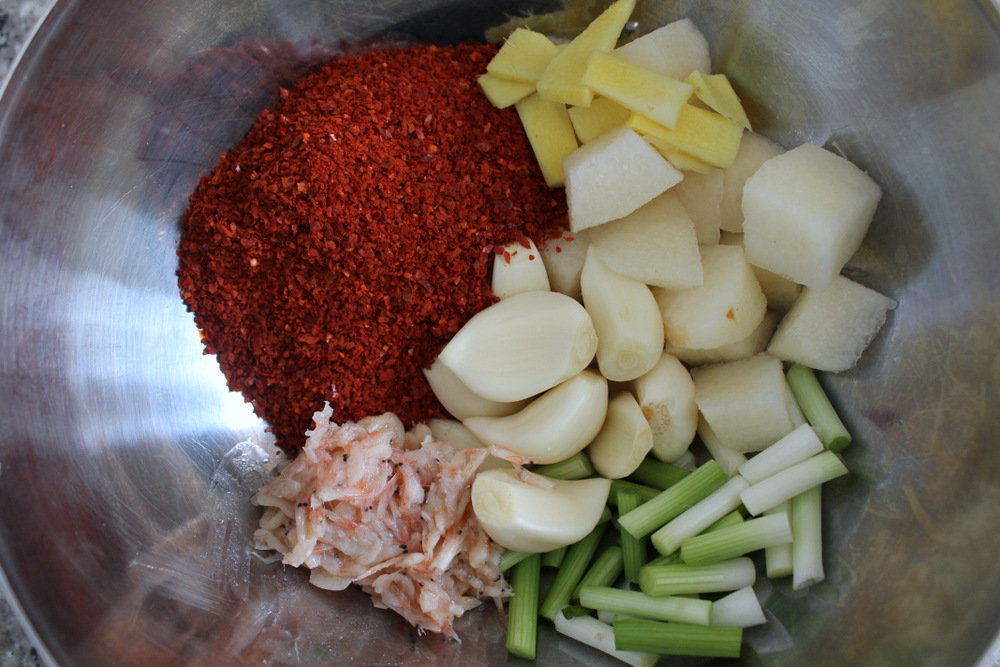
While the bok choy and cabbage are resting, I prepare the remaining ingredients. First up: chili paste. This fiery, potent blend of kochukaru (Korean chili flakes), ginger, garlic, and fermented seafood is the heart of kimchi, providing catalysts for fermentation. Proportions and the choice of ingredients will vary from kimchi maker to kimchi maker; I like to make a relatively mild chili paste for a versatile finished kimchi. It is certainly possible to make vegan kimchi if you’d like. Good, umami-rich substitutions for the salted shrimp include miso, soy sauce, and ground seaweed.
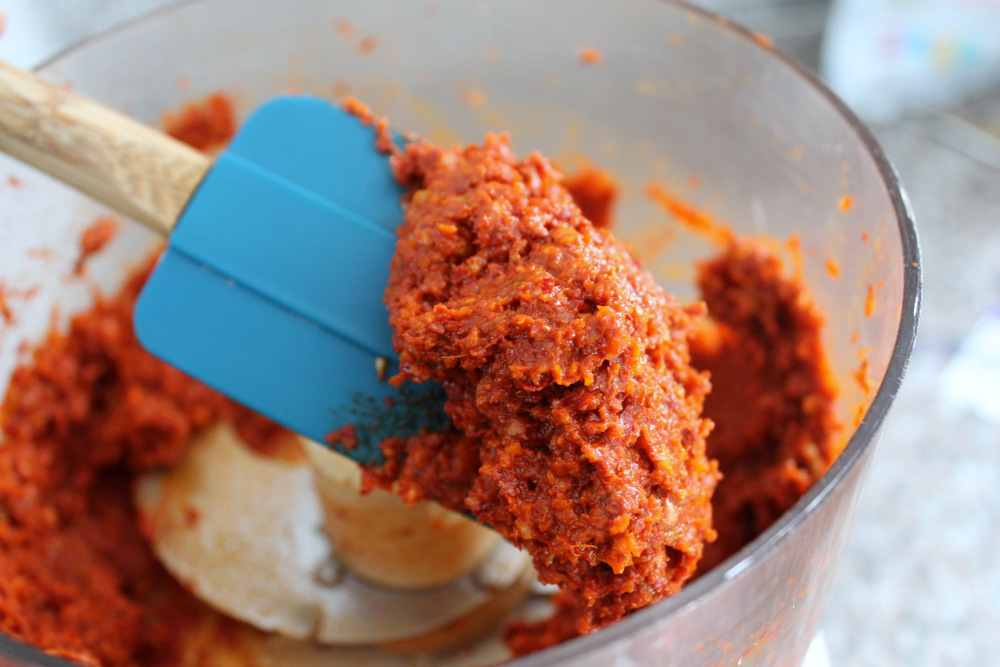
For my chili paste, I process a full head’s worth of peeled garlic cloves, about an inch of fresh ginger, 1/2 cup of kochukaru, and 2 tablespoons of salted shrimp (those little pink shrimp found in massive jars at Korean supermarkets) in my food processor with about 1/4 of an Asian pear (for natural sweetness) and the white ends of a bunch of scallions. Traditionalists can use a mortar and pestle if they desire. I let the whole mess whir in the food processor until a thick, homogenous paste forms.
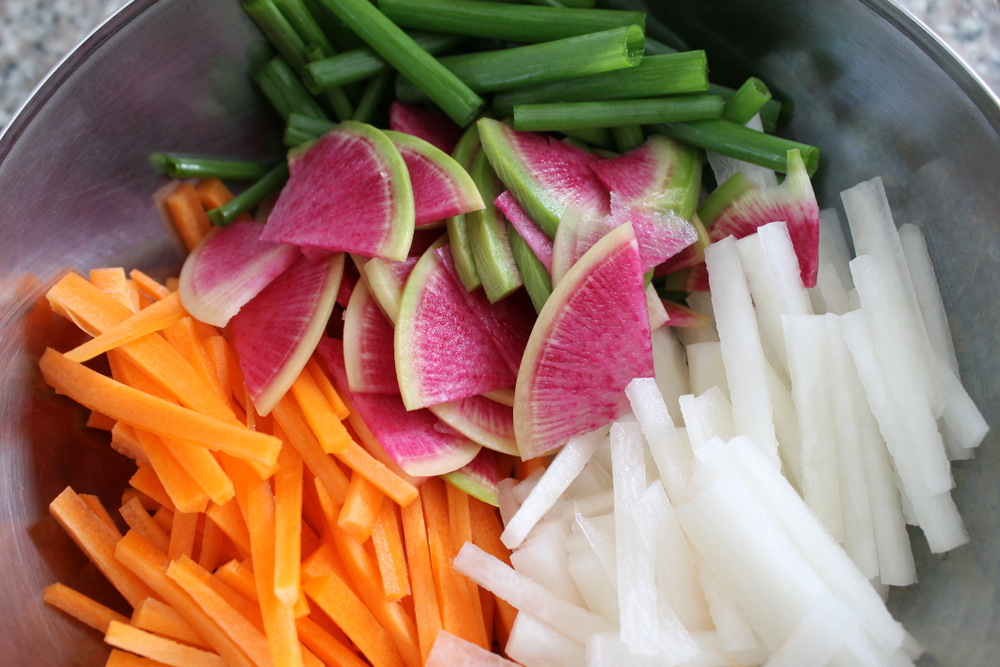
Next, I chop the remaining kimchi ingredients. Here I look for whatever crisp, crunchy vegetables that are available at the market. For this kimchi, I’m using carrots, daikon radish, watermelon radish, and the greens from that bunch of scallion whites that went into the chili paste. I julienned the carrots and daikon, which is simply the fancy way of saying that I cut them into thin, 2-inch long strips, cut the watermelon radish into thin wedges, and cut the scallion greens into 2-inch long pieces. You can, of course, modify this list with your favorite vegetables. Use around 1 to 1 1/2 cups of each chopped vegetable.

Once the bok choy and cabbage mixture has softened, I drain the leaves while reserving the extruded liquid. I mix the wilted leaves with the remaining chopped vegetables in a large bowl. Then I put on my handy rubber gloves. The first time I made kimchi, I mixed the chili paste into the cabbage with my bare hands. Big mistake. My hands burned with the fire unleashed by the capsaicin in the chili powder. Rubber gloves may not look cool, but they’re the only way to prevent chili burns. Gloves in place, add the chili paste to the vegetables and massage it into the vegetables. Make sure to coat all of the vegetables evenly.
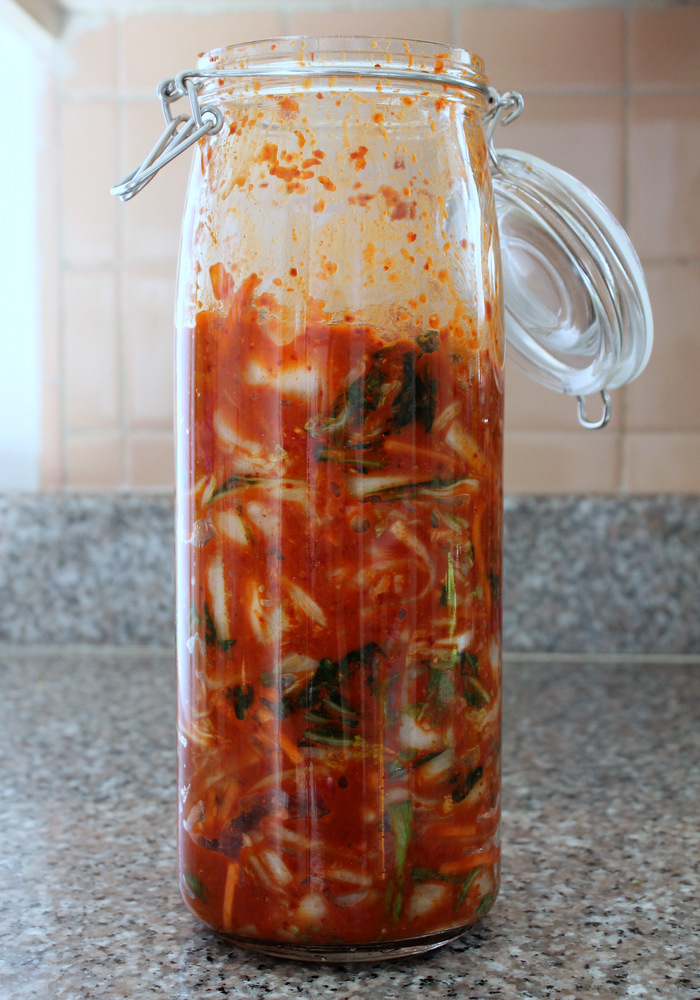
Finally, pack the vegetables into a large glass jar. I have one 2-quart jar that I like to use for kimchi, but you can use smaller jars if that’s what you have. Press the vegetables down into the jar (still wearing those gloves), and then use a chopstick or long skewer to break up any bubbles that have formed in the mixture. Now pour that reserved liquid from the bok choy mixture over the top of the pickles. This layer of salty liquid will help to reduce the amount of oxygen that reaches the kimchi fermenting below. Now close the lid loosely and set the jar in a cool, dark place to ferment.
